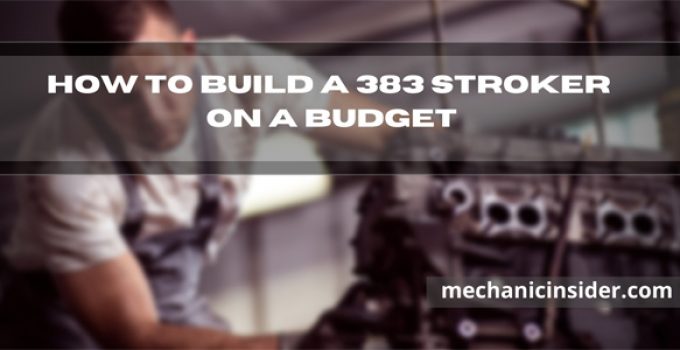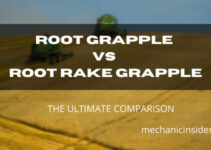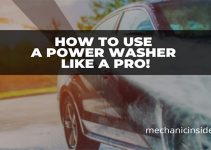Suppose there was a hall of fame for great ideas. The first builder who made the omnipresent 383 stroker combination would have his name right up there. The 383 stroker not only adds 33 cubic inches over the 350 engines but also has additional torques. A stock’s bore/stock’s ratio, short-stroke 350, with its 3.480 inches of stroke and a broke 4.000 inches, is 1.150:1.
The stroker 383 engine is oversquare as well due to having a larger bore diameter than the stroke. It is much more similar to the square engine with a stroke ratio of 1.07:1. This ratio presents an improved torque production.
Now, we all want a car with big-block power. But not all of us have the financial capability to do so. In this article, we will be talking about how to build a 383 stroker on a budget that just might be the solution that we are looking for.
What do we need?
Before going into building ourselves a 383 Chevy, we shall first have to determine what we need. Now, as we are on a limited budget, we have to choose our parts carefully.
Fortunately, we are not the first ones on the market who were hoping to build an engine with a powerhouse performance.
For those of us who are on a budget, there are several 383 stroker kits for sale, which have the minimum costs. Also, the 383 strokers for sale on the market cost the same as the Chevy 350s.
For the selection process, we are going to have to select the following parts. For the short block:
- Engine block
- Crankshaft & rods
- Rings
- Timing chain
- Oil pan
- Gaskets
And for the long block, we will need:
- Rockers
- Heads
- Cams
- Intake
- Valve covers
- Carburetor
- Distributor/Ignition
Do note that in the case that we are not on a limited budget, there are some powerhouse 383 stroker kits that are available in the market, which are a bit on the costlier side. Such as 454 stroker kit, 383 stroker kit 500 HP, 550 HP 383 stroker build, and even 600 HP 383 stroker build as well.
While some enthusiasts may want to know about the best 383 stroker kit out there, here we are going to focus on building 383 engines on a budget.
Preparations need to be followed
Finding an engine block that had low mileage on it and met our goals.
We need to check whether the block has any cracks or other problems.
We need to determine the size of the carburetor. Here we are going to use the 800 CFM carb, which is the recommended level to use.
We must check the central bearing alignment.
How to build a 383 stroker
Now that we have gathered our required tools and we're well prepared, let's dive into building this beast.
Machining
We have to have the block tunneled 0.030 over 4.030 inches. After boring the block, we have to have the main bores honed and align-bored.
Finally, we need to have the lifter bores honed and checked and grind the deck surfaces flat.
Installing the Crankshaft
We need to clean the crankshaft thoroughly. We have to make sure the oil holes are flow free. We also have to inspect all the journals to ensure that the crankshaft is free of scratches, hairline cracks, and nicks.
After measuring all the journals and having matched them to their particular bearings, we can lay the crankshaft in place.
Now, we have to position the crankshaft on the engine block. We have to be careful that the caps are not installed yet.
In order to measure endplay, we can install a dial indicator on the nose of the crankshaft. After making sure we have the wanted endplay, we can install the rear primary seal before we bolt on the main cap.
Acquiring Cylinder Heads
We need to purchase a set of fully assembled L-31 GM Vortec heads. They can be new or used. At the 0.50-inch lift, these first-generation Vortec heads have a CFM of 239/147.
And we can bolt them on directly on any small-block engines. In its complete stock form, it is said to make the 383 stroker HP of 450.
Another popular option is Edelbrock’s E-TEC 170cc heads. The 383 stroker horsepower chart is said to make 430 HP and is quite an affordable package.
Purchasing and Working on an Intake Manifold
As we are using the L-31 GM Vortec heads, because of them being easy to acquire, we have to buy ourselves an intake manifold that is designed to fit a carb to Vortec heads.
The Professional Products and Weiands make very competitive offerings while the Edelbrock Performer is a known good choice.
And if we want to do something different, we can take a look at the intake designed for the 1996-2007 Indmar marine engines. We do have to note that they are high-rise and dual-plane.
We will need to gasket-match the intake ports and decrease the short-side turn, and before moving on to the next step, we will have to smooth the valve seat ridge in the bowl are behind the valves.
Installing a Camshaft
We are going to set up a flat-tappet hydraulic camshaft with a duration of 229 degrees at 0.050, 0.510-inch lift exhaust, and 0.500-inch lift intake with approximately a 112-degree angle of lob separation and intake with about 222 degrees.
Do note that, if you want to increase power, you can substitute the flat-tappet cam with a roller-cam though that will increase the total costing.
The camshaft will be quite gentle in a 383, and since we are using L-31 heads, they begin to fall off at lifting more than 0.500 inches nevertheless.
Working on the Pistons
We need to coat the roof of the combustion chamber, the interior of the intake, and the tops of the pistons.
We also have to cover the outs and ins of the tubular exhaust headers and the insides of the exhaust ports. For coating, we can use a thermally insulating ceramic powder coating.
We did this so that the coating keeps the heat of the engine inside it, which will help it make more power rather than leaking it onto our engine bay and cooling system.
Finishing Up
Now all we have to do is, use a 1.6:1 roller-tipped rocker arms to top the engine off.
We can use a carburetor of 800 CFM. We can also use a carburetor of 700 CFM as well.
We also need an ignition box with multi-spark, a high-energy ignition distributor, a conventional oil pump, wide-gapped spark plugs, and synthetic race oil.
CHALLENGES
Now, at a quick glance, building the 383 stroker engine seems so simple that it feels almost as easy as to fry an egg and jam it between two bread pieces.
Unfortunately, it is not so simple. The complexity occurs because of the product features and the unique design of the 400. Dropping the 400 engine’s crankshaft into a Chevy 350 has many complications.
STROKER CHALLENGES:
The main challenge while building a strong 383 stroker motor from a Chevy 350 rises mainly due to the parameters of the lock and the structure of the rotating assembly.
Usually, the small-block castings come with a deck-height of 9.025 inches.
This denotes that the flat portion that is on top of the piston, the height of compression for the pistons, and the interval between the wrist pin centerline are all critical factors.
Chevrolet used a comparatively shorter connecting rod with a length of 5.565 inches to keep the same compression height for the 400 SBC as the Chevy 350.
Due to the longer stroke/rod ratio, as the pistons started to move up, they pushed too roughly against the cylinder wall. This created friction that deteriorated the engine’s performance and high-RPM capability.
BALANCE & SEALING:
Another thing to know about the crate engine 383 is that the 400 crankshafts and many aftermarket cranks specially designed for Chevy stroker 383 are externally balanced.
It is because, in order to achieve a longer stroke, the crankshaft counterweights are necessary.
But the counterweights were added not at the start but the ends of the crankshaft in order to ensure block clearance.
This means the harmonic balancer and flexplate are particular for an engine that is balanced externally.
It is a less than ideal setting in a high-performance combination as it can initiate deleterious twisting force on the crankshaft at a higher RPM.
CAMSHAFT SELECTION:
We have to consider almost endless variables while selecting the optimal camshaft for any engine build.
But while considering a cam for the 383 stroker Chevy, one of the main variables to consider is the length of the camshaft.
Generally speaking, a stroker combination will need more time to process the additional air delivered by the more massive engine displacement. Higher piston speed is required, which is directly related to the camshaft rod’s length and affects the optimal duration in the crankshaft degrees.
Summing it all up
While it is possible to build a 383 stroker on a budget, there are several stroker 383 kits, 350 stroker kits, stroker kits for 454 available, which one can use to build a 383 stroker with even higher horsepower. But, if you are on a budget, then this is the optimal build for you, and we hope this article helps!




Oh my goodness! Incredible article dude! Thank you